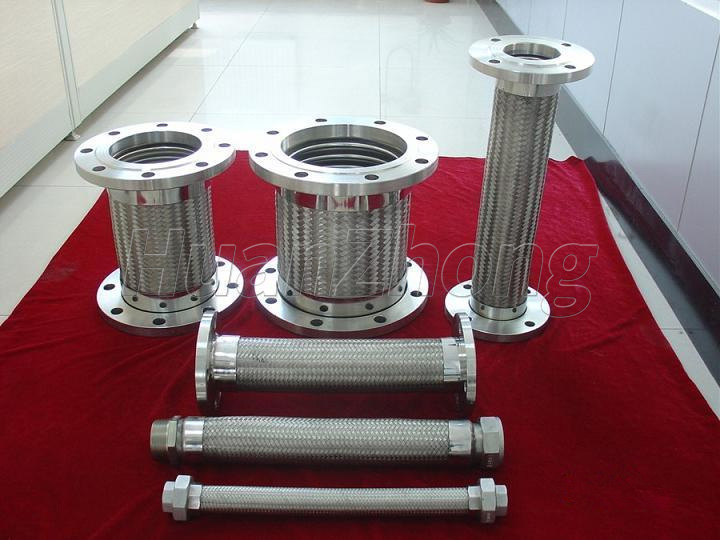Problems encountered in the service life of prestressed corrugated metal hoses
In the working process, prestressed corrugated metal hose has two states.
One is working under specific load and displacement conditions, and keep the load and displacement constant or little change, called static work; another use case is alternating load and displacement cycles, in a cyclic working state. Due to the different operating conditions, the mode of component damage or failure is also different. Instrument elastic sensitive components work in the elastic range, basically in a static working condition, long service life, generally up to tens of thousands of times to hundreds of thousands of times. Corrugated hose components used in engineering sometimes work in the elastic range or alternating stress state, the service life of only a few hundred times or more. Components in the cycle of work, must be given the use of time, and specify the number of cycles, time and frequency. The rated service life of the elastic element is determined at the time of element design.
Bridge prestressing corrugated hose, also known as prestressed metal corrugated hose, we are going to understand three common construction problems.
First, the plugging of holes at the joints of prestressed corrugated metal hose. The incidence of this type of blockage phenomenon is high, especially in the construction of concrete structures. The main reasons for this phenomenon are the following two aspects: under the impact of concrete or pounding extrusion, the socket length of the casing with the joint is insufficient, resulting in direct blockage of the concrete; the distance between fixed bars is too large, and the corrugated hose floats up or deviates from its original position when filling concrete and pulls out the joint.
Pre-stressed corrugated metal hose middle plugging caused by such plugging of the main reasons are as follows.
1 . Poor quality, poor sealing performance, easy to leak under bending conditions.
2 . Nearby sharp steel head or pre-buried parts, especially in the case of poorly fixed corrugated hose or fixed point spacing is too large. When the corrugated hose floats up or deflects during the concrete filling process, it will encounter sharp objects and enter the slurry after collision .
3 . When welding the steel skeleton, the welding slag drips and burns through the prestressing corrugated hose, causing the entry of slurry.
4 . When filling concrete, the plastic corrugated hose is pounded or flattened by the vibrating pounding rod, making it impossible for the steel bundle to pass through.
Thirdly, plugging the hole by piercing the bundle
When checking the orifice with a through-hole device before piercing the bundle, the orifice was clear, but it could not be passed when piercing the bundle. During the inspection, it was found that the prestressing corrugated hose was rolled into a ball. It turned out that the prestressing corrugated hose hung on the steel bundle during transmission and continuously pulled the clamping direction, resulting in self-blocking of the prestressing metal corrugated hose.
The reasons for this are: (1) "burr" after cutting; (2) the joint failed to dock in place; (3) tilted mouth cut; (4) deformation of the mouth; (5) poor processing quality of the steel beam head, not polished smooth.
